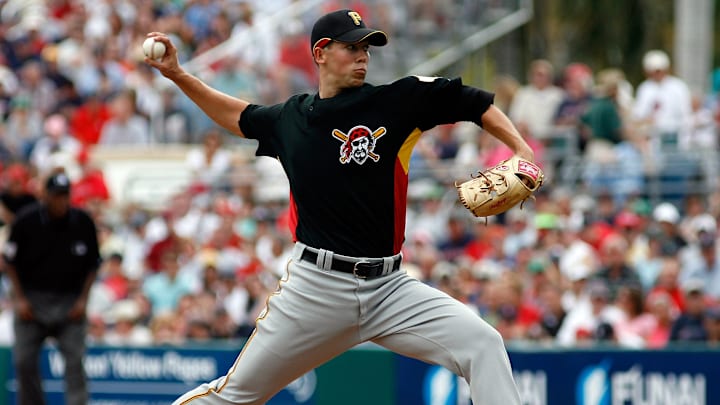Vic Black
Vic Black was the last selection of the supplemental first round in the 2009 draft, so he counts for this list. Of the four names included, he is the least prominent. Black was taken out of Dallas Baptist University, a small school now that’s now a baseball-only affiliate of Conference USA. The Pirates selected Tony Sánchez, a catcher out of Boston College, fourth overall in that same draft. Sánchez, a more well-known bust, likely overshadowed Black in the minds of Pirates fans.
Black pitched well in his brief showing that year, which included seven starts for State College, but labored over the next few minor-league seasons. His breakout came in 2012 for the Altoona Curve. By then a full-time reliever, Black had a phenomenal 1.65 ERA in 60 innings pitched, notching 13 saves. You’ll notice that many former top pitching prospects successfully make the transition to the bullpen. He moved up to Indianapolis in ‘13, further developing his skills, and was named to theTriple-A All-Star Game for the International League team with teammates Josh Harrison, Kris Johnson and Sánchez.
Black later made his debut for the Pirates on July 25 against the Washington Nationals, closing out the eighth inning in an eventual 9-7 Pirates loss. He only made two more appearances for the Bucs before getting dealt to the Mets as the player to be named later in the Marlon Byrd acquisition. Byrd is best remembered for his performance in that year’s Wild Card Game. Black made 15 appearances out of the bullpen for the Mets in 2013. He had a solid 3.46 ERA in 13 innings. He became a regular for them the following season, improving in nearly every measurable statistic, though he missed some time due to a herniated disk in his neck. He spent all of 2015 rehabbing in the minors and was later released.
Black later spent time in the Giants organization in 2017, then pitched for the New Jersey Jackals of the former independent Canadian-American League. Most likely don’t know his connection to the 2013 squad and the infamous “Cueto” game. Had Byrd not been on the team and never hit his solo shot in the second inning, would the Pirates still have beaten the Reds that night? While expectations for someone like Black were relatively low compared to others like Bullington, it would have been interesting to see how his career turned out had he remained in Pittsburgh.
